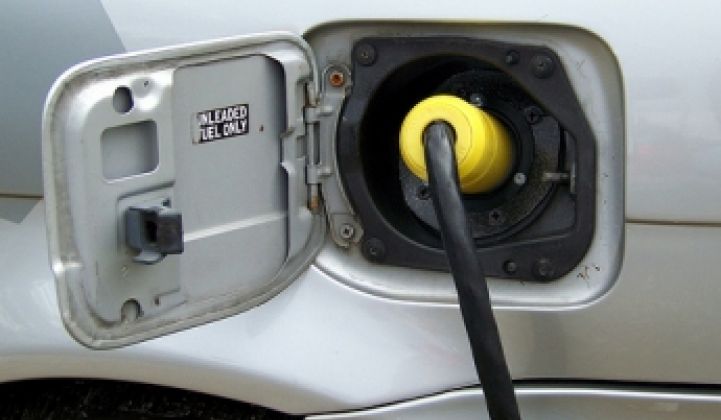Reporting from the Fujitsu Labs of America Technology Symposium 2010 on the smart grid. One of the event's panels covered electric-vehicle infrastructure.
Sven Thesen of Better Place showed a video of BP's Tokyo Taxi demo using the Better Place battery swap (here's a battery swap video). In Tokyo, two percent of the total cars on the road generate 20 percent of the emissions. Thesen noted that while unmanaged charging would require lots more power generation capacity, managed charging requires little or no additional capacity. Israel is Better Place's first test market and it is assumed that the concept will work better in smaller nations and island nations, where the driving range is limited. BP is initially targeting the fleet market.
Serdar Uckun, Manager, Embedded Reasoning Area at PARC, was the "resident pessimist" on the EV panel. He expressed the hope that we were not moving too fast on EVs and that we wouldn't soon be seeing the movie sequel, Who Killed the Electric Car? Part 2. He cited some really difficult issues with EVs, maintaining that there are significant gaps in battery technology and that more R&D funding and public education was required. Uckun also claimed that if you ran the Tesla Roadster at its rated 240 horsepower, the battery would last for about 12 minutes before failing.
He said that we needed battery improvements in specific energy, pricing and cycle life. He also added that the heralded 'cached energy' concept of Vehicle to Grid (V2G) was a "red herring" and "not likely to work."
John Suh of GM's Advanced Technology Silicon Valley office was also on the panel. He mentioned that GM was agnostic on removable batteries, but that for now, the battery in the GM Volt was non-removable because weight and size made it such an integral part of the car's design. He added that it was difficult to standardize a battery across a wide range of vehicles, citing the wide range of lead acid batteries as an example. He also asked what was better for the environment: an EV or a highly efficient internal combustion engine-powered car.
Jay Friedland, the Legislative Director of Plug-in America, was the resident optimist on the panel. He countered Uckun's skepticism with the invitation to check out his nickel-metal-hydride-battery-powered SUV in the parking lot, which he showed off to curious audience members after the panel discussion concluded. Friedland drives the nine-year-old battery-powered vehicle every day -- about 70 miles round trip. He mentioned that Chris Paine, the director of Who Killed the Electric Car? was in fact coming out with a sequel called Revenge of the Electric Car.
Friedland suggested that we need to foster new behavior patterns to assuage the dreaded "range anxiety." He told the story of a woman asking, "What if I want to drive to Tahoe?" That's a trip of 200 miles. When asked how often she goes to Tahoe, the answer was that she had never been there. Friedland called these "aspirational trips."



